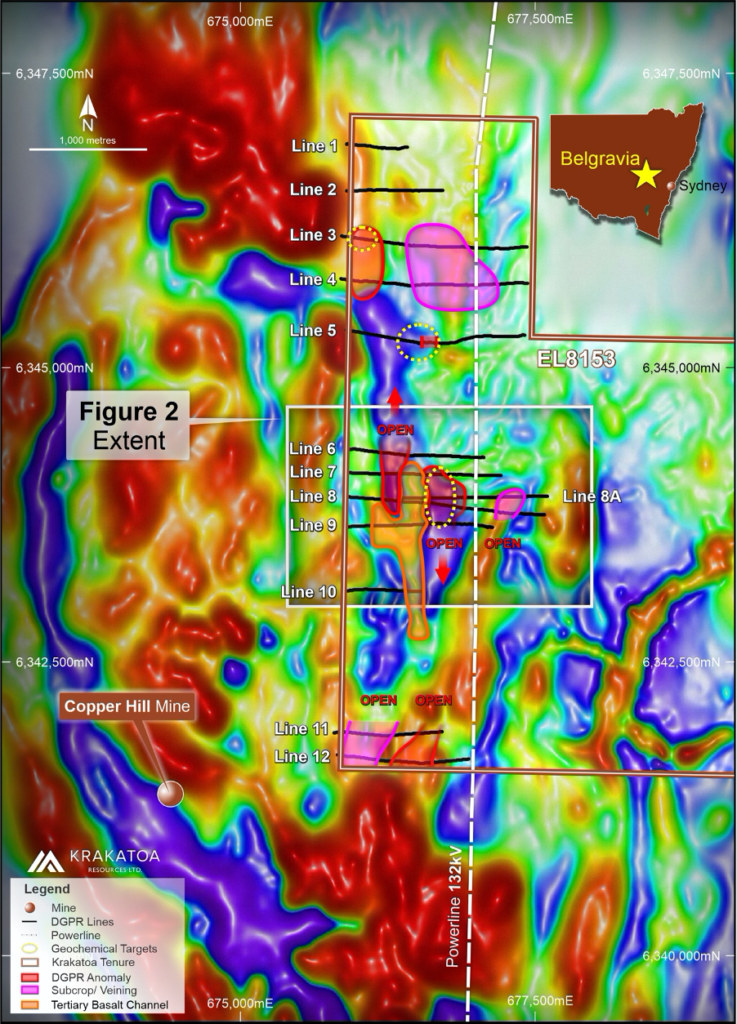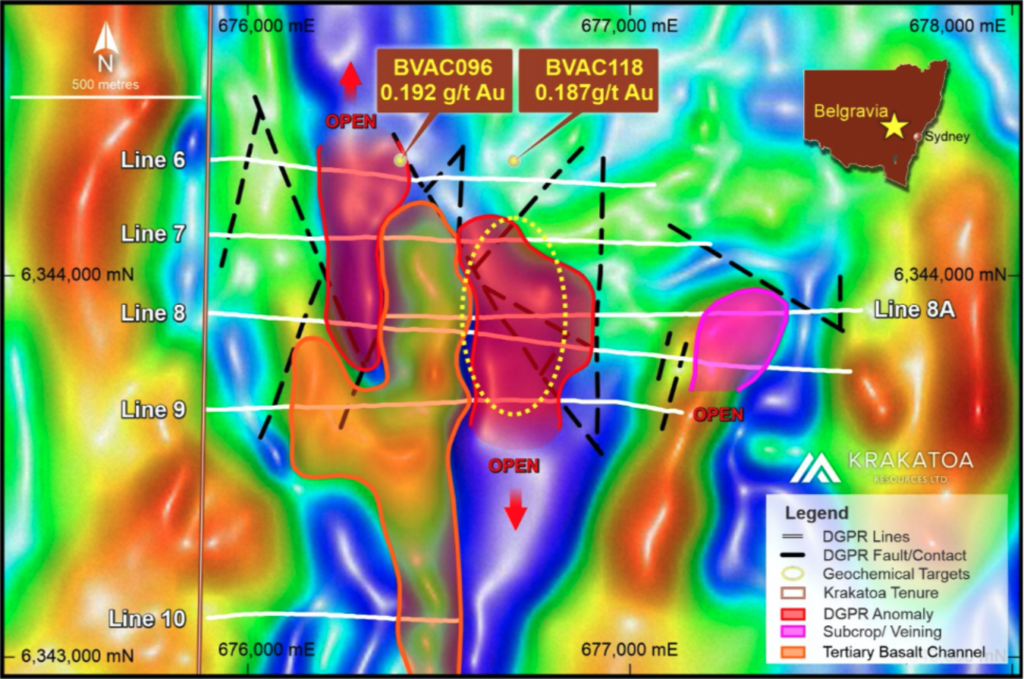Belgravia Project, Bell Valley Porphyry Target Area
Highlights
-
DGPR results have revealed several anomalous zones in the Bell Valley Target Area:
-
Confirmed the previously announced Bella, Lara 1 and 2 anomalies
-
Generated a completely new zone in south-west, the closest area to Copper Hill
-
Multiple DGPR anomalies are open to the north and south
-
-
Interpreted DGPR anomalies are coincident with:
-
existing drilled anomalous gold and multielement geochemistry;
-
identified zones of monzodiorite intrusion; and,
-
a deep magnetic low feature characteristic of a porphyry-style deposits such as Copper Hill Au-Cu Deposit
-
-
The sub-surface DGPR anomalies are interpreted to represent irregular quartz stockworks, sheeted quartz veining and disseminated sulphides plausibly associated with porphyry-style Cu-Au or related styles of mineralisation
-
An induced polarisation (IP) survey to be implemented to focus future diamond drilling
A deep ground penetrating radar (“DGPR”) survey was completed during the June 2020 quarter at Belgravia to map the sub-surface geology and provide evidence of favourable hosting environments for mineralisation. The survey acquired a total of 15,373 line metres across 13 lines at Bell Valley.
The surveyed lines at Bell Valley were designed to cover the areas under previous shallow AC drilling, to assist and constrain the interpretation in tandem with geological, structural, drilling and surface geochemical data.
DGPR results for Bell Valley were announced on 24th July 20 with several anomalous zones revealed. Three of the composite DGPR anomalies are located at or adjacent to previously delineated and reported interpreted porphyry-style Bella and the Lara 1 and 2 targets.

Figure 1: DGPR survey lines and anomalies on processed Aeromagnetic Imagery
The anomalies at Bella and the Lara 1 and 2 coincide directly with drill-indicated mineral alteration and anomalous multi-element geochemistry, key geological features including interpreted structure or lithological contacts, interpreted discrete magnetic features, including the low magnetic signature which is observed to control or influence the location of mineralisation at the Copper Hill deposit and several additional prospects, see Figure .
Drill-indicated gold mineralisation in quartz gravels preserved beneath Tertiary basalt coincides with the western DGPR anomaly and lies just north (downstream) of the actual (eastern) Bella anomaly. A composite DGPR anomaly also lies in the southwest of the Bell Valley target area, the closest to Copper Hill.
The Company considers the economic potential for copper-gold mineralisation associated with a porphyry in the Bell Valley area may lie at depth (>200m) and the DGPR supports high-grade copper-gold veins potentially extending upwards from a porphyry source forming a secondary target at shallower levels. An induced polarisation (IP) survey to locate zones of sulphide mineralisation as detected by DGPR, will be completed at Bella and the Lara’s. The IP will focus future diamond drilling at these prospects.
 Figure 2: DPGR survey (white lines) across the Bella Target Area with composite representation of DGPR anomalies (red polygons) exhibiting the significant correlation with geochemistry, geological structure and the magnetic low feature known to control mineralisation.
Figure 2: DPGR survey (white lines) across the Bella Target Area with composite representation of DGPR anomalies (red polygons) exhibiting the significant correlation with geochemistry, geological structure and the magnetic low feature known to control mineralisation.
Next step is an induced polarisation (IP) survey to be implemented to focus future diamond drilling .
See full announcement as at 24/7/2020
https://www.asx.com.au/asxpdf/20200724/pdf/44ksrf6cfy89zr.pdf


